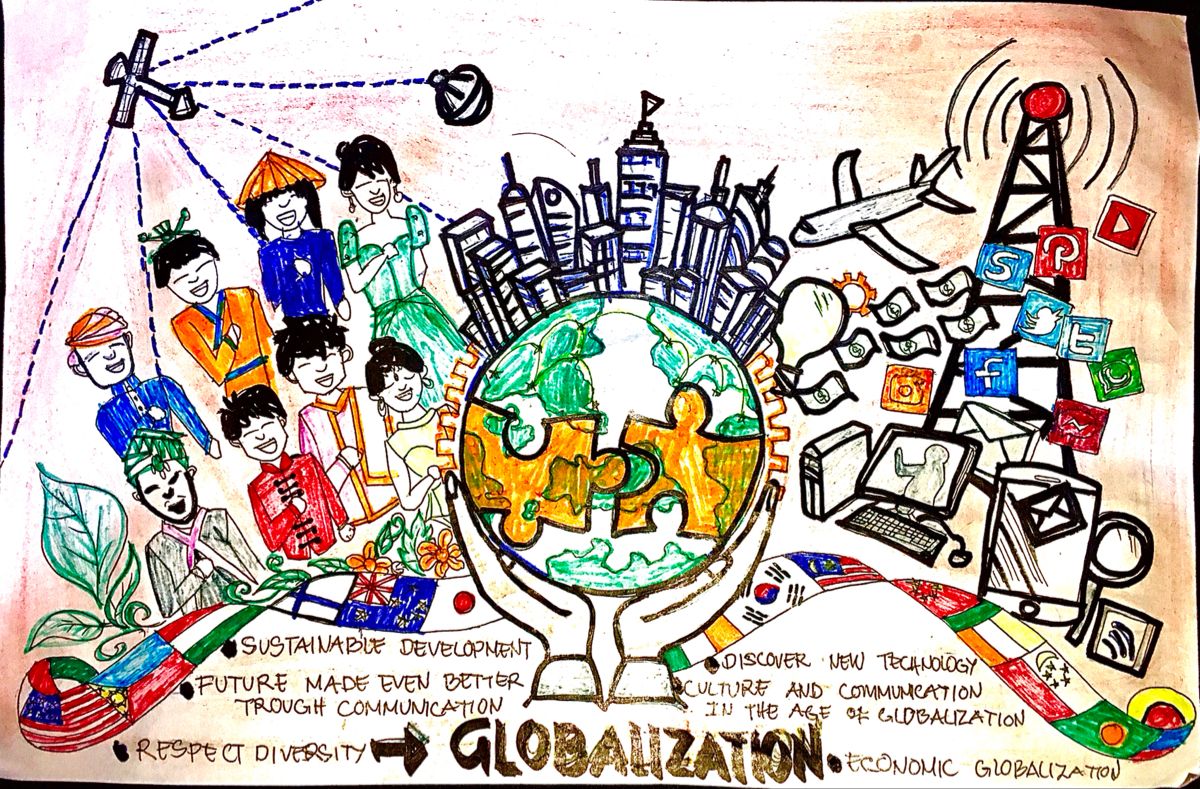Globalization Poster What is globalization? In simple terms, globalization is the process of expanding world trade, contacts among societies, and the sharing of ideas around the world. It’s often used to describe the spread of Western culture and business around the world.
The globalization of business is often thought to have started with the East India Company, which was founded in 1600. The company was formed to exploit the trade in spices between Europe and Asia. The company quickly grew in size and influence, and by the early 1800s it was the largest company in the world. During the 19th century, there was a wave of globalization as new technologies and transportation systems made it easier to trade and travel around the world. This led to a rise in colonialism as European countries sought to expand their empires.
In the late 20th century, globalization accelerated again as advances in technology and communication made it easier for people and businesses to connect with each other. The fall of communism also contributed to globalization, as countries like China and Russia opened up to the world economy. Today, globalization is having a profound impact on all aspects of our lives. It’s reshaping our economies, societies, and even our identities. And it’s creating new challenges and opportunities for businesses, governments, and individuals around the world.
What are the benefits of globalization?
- Globalization has led to a more efficient and interdependent world economy.
- It’s made it easier for businesses to operate in multiple countries and access new markets.
- It’s increased competition, which has spurred innovation and helped to lower prices for consumers.
- It’s facilitated the spread of new ideas and technologies around the world.
- It’s made it easier for people to travel and migrate to other countries.
What are the drawbacks of globalization?
- Globalization has led to the rise of multinational corporations, which have more power than many governments.
- It’s increased inequality between rich and poor countries, and within countries.
- It’s contributed to environmental problems, as companies seek to exploit natural resources in new areas.
- It’s led to the loss of traditional cultures as people adopt Western lifestyles.
Global Warming Poster

Global warming Poster is one of the most pressing environmental issues of our time. It’s a problem that we can no longer ignore, and one that we must work together to solve. A global warming poster is a great way to spread the word about this important issue. A well-designed poster can be very effective in raising awareness and getting people to take action.
There are a few things to keep in mind when designing a global warming poster. First, it’s important to make sure the message is clear. The poster should have a strong title and a clear call to action. It’s also important to use eye-catching images that will grab people’s attention. Bright colors and bold designs are often most effective. And finally, don’t forget to include your contact information so people can get in touch with you if they want to learn more or get involved. With a little thought and creativity, you can create a powerful global warming poster that will help make a difference.
Globalization Poster Drawing
The globalization poster drawing is a great way to show your support for the global community. This poster can be used to support any type of global event or initiative, and can be customized to fit your specific needs. You can use the globalization poster to promote international understanding and cooperation, to raise awareness of global issues, or to simply show your support for a cause you believe in.
Poster About Globalization
What is globalization? This is a difficult question to answer because globalization means different things to different people. In its broadest sense, globalization refers to the process by which people, cultures, and economies are becoming increasingly interconnected. Many people see globalization as a positive force that is creating new opportunities and making the world more interconnected and interdependent. Others see globalization as a negative force, causing environmental destruction, economic inequality, and cultural homogenization.
There is no question that globalization is a complex phenomenon with many different causes and effects. In this blog post, we will take a closer look at some of the posters about globalization and what they tell us about this complex phenomenon. This poster was created by the United Nations Development Programme (UNDP) and it depicts globalization as a force for good. The poster argues that globalization can help reduce poverty and inequality. It also promotes the idea of global citizenship, which is the idea that we are all citizens of the world and we have a responsibility to take care of it.
This poster was created by the anti-globalization group Attac. It depicts globalization as a negative force that is destroying the environment and causing economic inequality. The poster argues that we need to stop globalization in order to save the planet and ourselves. This poster was created by the World Trade Organization (WTO). It depicts globalization as a positive force that creates new opportunities for trade and economic growth. The poster argues that globalization can help reduce poverty and improve living standards.
So, what do these posters tell us about globalization?
There is no single answer to this question. Each poster reflects the different perspectives of the organizations that created them. However, what all of these posters have in common is that they depict globalization as a complex phenomenon with both positive and negative effects. It is important to remember that globalization is not a single force with a single effect. It is a complex phenomenon with many different causes and effects. And, like all complex phenomena, it is difficult to understand and even harder to predict.


[…] Explore more in our globalization poster series. […]